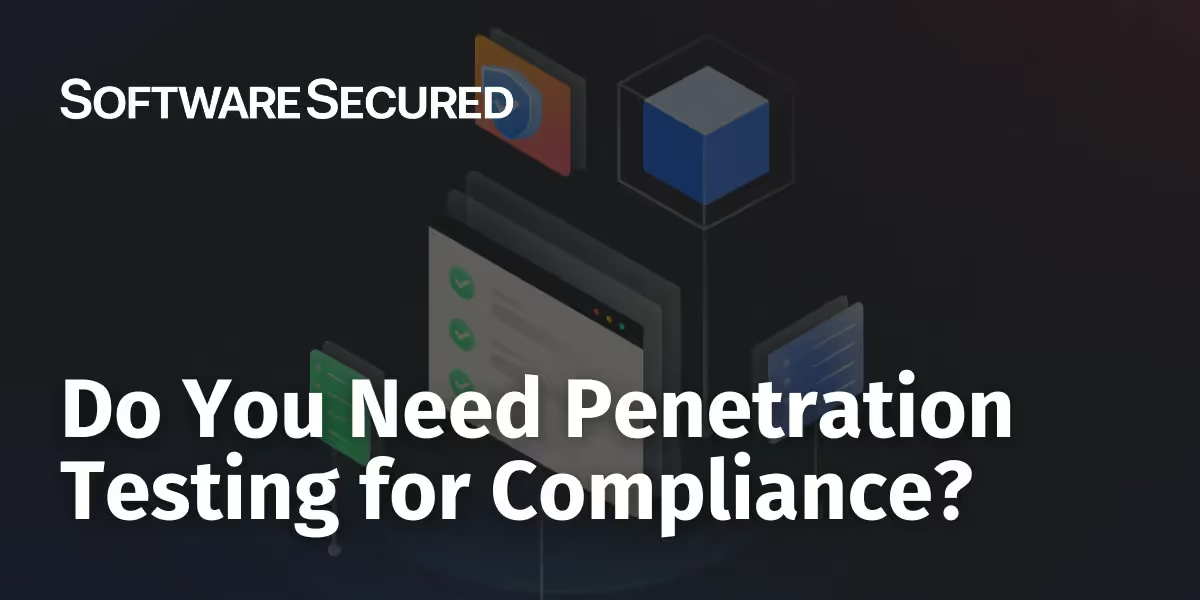The Importance of Hardware Pentesting for Security Leaders
Discover the significance of hardware pentesting for security leaders. Learn how to assess vulnerabilities in physical devices and firmware effectively.
In today’s hyper-connected world, hardware underpins virtually every digital interaction, from gateways in smart factories to life-critical medical devices. While software and network defenses have matured significantly, hardware remains one of the most persistently underexamined attack surfaces.
A single hardware vulnerability, whether it’s an exposed debug port, malicious firmware implant, or compromised supply-chain component—can render even the most advanced software protections ineffective. For senior technology leaders, ignoring this attack surface is no longer an option. Hardware penetration testing (HPT) is not just a technical exercise; it’s an essential component of a resilient, compliant, and future-proof security strategy.
This article explores why HPT is vital for executives, the core pillars of a modern hardware security assessment, advanced attack scenarios, compliance implications, and how to generate clear ROI that resonates with both boards and auditors.
1. Why Hardware Penetration Testing Matters at the Leadership Level
1.1 The Foundation of Trust
Hardware is the root of trust for the entire technology stack. Every encryption key, authentication token, and secure software module ultimately relies on the integrity of the device’s hardware. If an adversary can compromise the hardware, they can potentially control operating systems, manipulate applications, decrypt protected data, and even alter a device’s physical behavior.
In many breaches, attackers bypass sophisticated intrusion detection systems and application firewalls simply by targeting the physical device. Once this foundation is compromised, no amount of software patching can restore the system’s integrity without addressing the underlying hardware weakness.
1.2 High-Impact Risk in Regulated Industries
For regulated sectors such as healthcare, finance, and critical infrastructure, hardware vulnerabilities carry outsized risk. A single point of failure in a medical device or industrial control unit can lead to life-threatening situations or systemic operational disruptions.
Regulations increasingly recognize this. Frameworks such as:
- GDPR – Stresses the security of all processing environments, including physical devices storing personal data.
- HIPAA – Requires safeguarding patient health data at all layers, including physical access and embedded system integrity.
- FIPS 140-3 – Governs cryptographic modules, requiring validation that extends to hardware implementations.
- FDA Medical Device Cybersecurity Guidance – Calls for proactive assessment of vulnerabilities, including those at the firmware and hardware level.
These requirements mean that hardware penetration testing isn’t just a security best practice—it’s becoming a compliance obligation.
1.3 Visibility, Governance, and Executive Assurance
Integrating HPT into your security program delivers leadership tangible, audit-ready evidence that:
- Physical and firmware layers have been tested against realistic attack scenarios.
- Security controls extend beyond network and software boundaries.
- Potential single points of failure have been identified before exploitation.
For boards and auditors, this level of evidence strengthens governance posture, improves regulatory standing, and provides reassurance to customers and partners.
2. Core Pillars of a Comprehensive Hardware Pentest
A robust hardware penetration test examines every layer of the device ecosystem. While testing scope will vary depending on the device type and risk profile, most effective engagements center around four foundational pillars:
2.1 Physical Tampering & Side-Channel Analysis
Attackers with physical access may attempt to:
- Open the device casing and probe circuit boards.
- Exploit electromagnetic emissions or power consumption variations to extract cryptographic keys (side-channel attacks).
- Use X-ray or advanced imaging to analyze chip structures.
Pentesters simulate these scenarios to validate tamper-resistance and identify exploitable leakages.
2.2 Fault Injection & Glitch Attacks
By manipulating voltage, clock speeds, or electromagnetic interference, attackers can induce faults that bypass security checks. Common techniques include:
- Voltage glitching to skip authentication routines.
- Clock manipulation to disrupt secure boot sequences.
- Electromagnetic pulse attacks to corrupt memory operations.
Testing for these weaknesses ensures that devices can withstand real-world environmental and fault-based attacks.
2.3 Firmware Extraction & Reverse Engineering
Firmware often contains the “crown jewels”—cryptographic secrets, proprietary algorithms, and configuration data. A comprehensive HPT may:
- Extract firmware through exposed ports (UART, JTAG, SWD).
- Reverse engineer binary code to identify vulnerabilities.
- Analyze update mechanisms to detect weak authentication or insecure transfer protocols.
This process not only finds flaws but also verifies whether encryption, signing, and secure update practices are properly implemented.
2.4 Supply-Chain Audits & Component Analysis
Modern devices are often assembled from components sourced globally. This introduces risks such as:
- Counterfeit chips with hidden backdoors.
- Components sourced from unverified vendors.
- Malicious modifications during manufacturing.
Pentesters conduct supply-chain reviews and component authenticity verification to mitigate these risks before products reach customers.
3. Advanced Attack Vectors & Real-World Scenarios
Beyond foundational tests, mature HPT programs assess complex and emerging threats.
3.1 Hybrid “Gray-Box” Assessments
A gray-box approach blends black-box (no prior knowledge) and white-box (full design access) testing. This enables simulation of:
- Insider threats from engineers or manufacturing partners.
- Supply-chain compromises where partial schematics are leaked.
- Sophisticated attackers leveraging partial device knowledge.
3.2 Malicious Peripheral Attacks
Interfaces like USB, Bluetooth, or proprietary connectors can be exploited by “evil maid” style attacks:
- A benign-looking accessory injects malicious firmware.
- A compromised peripheral captures sensitive data streams.
- Physical connector interfaces become a direct path into device internals.
Pentesting replicates these scenarios to assess resilience against rogue accessories.
3.3 AI/ML Model Poisoning in Hardware
Edge devices increasingly embed AI accelerators for real-time analytics. This creates new attack vectors:
- Poisoning – Introducing manipulated training data to alter device decision-making.
- Adversarial Inputs – Feeding carefully crafted inputs to force incorrect inferences.
HPT in these contexts includes adversarial model testing to ensure AI-driven hardware remains trustworthy.
4. Aligning HPT with Compliance & Governance
To be effective at the leadership level, HPT reports must be:
- Audit-Ready – Presenting clear, reproducible findings that can withstand external review.
- Mapped to Standards – Aligning vulnerabilities with frameworks like NIST, ISO 27001, or sector-specific requirements.
- Action-Oriented – Providing prioritized remediation guidance based on risk, not just a list of flaws.
This ensures security findings integrate smoothly into broader compliance programs and enterprise risk registers.
5. Demonstrating ROI & Gaining Executive Buy-In
Hardware testing investments compete with other security initiatives. Winning executive support requires quantifiable value:
5.1 Quantify Potential Losses
Estimate impact of a successful hardware exploit:
- Financial loss from product recalls.
- Regulatory fines.
- Reputational damage and loss of market share.
5.2 Compare Against Pentest Investment
Highlight how the relatively modest cost of an HPT engagement can offset multimillion-dollar exposure.
5.3 Lifecycle Integration
Demonstrate that integrating HPT early in design and manufacturing:
- Reduces cost of fixes.
- Improves time-to-market by preventing late-stage redesigns.
- Enhances customer trust and product longevity.
6. Best Practices & Implementation Roadmap
6.1 Define Clear Scope
Tailor testing objectives to:
- Device type.
- Threat model.
- Compliance requirements.
6.2 Engage Early & Often
Test during:
- Prototype phase – to identify design weaknesses.
- Pre-production – to validate fixes.
- Post-deployment – to detect supply-chain or firmware update issues.
6.3 Invest in In-House Tooling & Expertise
While external pentesters bring specialized skills, developing internal hardware security knowledge ensures continuous coverage between formal engagements.
6.4 Bridge Organizational Silos
Hardware security is a cross-discipline effort:
- R&D engineers.
- Firmware developers.
- Supply-chain managers.
- Security teams.
Establishing joint ownership ensures vulnerabilities don’t fall through the cracks.
7. Case Study: Securing an Industrial IoT Gateway
Background:
A large manufacturer deployed thousands of edge gateways to monitor factory equipment. These devices ran custom firmware on ARM Cortex-M microcontrollers, storing authentication tokens and routing data over MQTT.
HPT Findings:
- Exposed UART debug port allowed direct firmware extraction.
- Secure boot disabled, enabling unsigned firmware uploads.
- Hard-coded credentials present in plaintext within firmware.
- Weak encryption on MQTT traffic, susceptible to interception.
Business Impact:
An attacker with short-term physical access could implant malicious firmware to:
- Redirect sensor data.
- Trigger false alarms or hide genuine failures.
- Exfiltrate operational data to external servers.
Outcome:
The manufacturer implemented secure boot, encrypted firmware storage, and hardened MQTT encryption. Post-remediation testing confirmed resilience against previous attack paths.
8. Conclusion & Call to Action
Hardware is no longer a peripheral security concern—it’s central to your entire risk profile. From industrial IoT gateways to medical devices, attackers increasingly target hardware weaknesses to bypass even the most advanced network and application defenses.
By embedding hardware penetration testing into your product lifecycle, you:
- Strengthen the root of trust.
- Meet evolving compliance requirements.
- Reduce the risk of catastrophic product-level breaches.
- Protect both operational integrity and brand reputation.
Ready to fortify your hardware ecosystem?
Software Secured’s hardware security experts design bespoke pentesting engagements—covering everything from PCB ingress testing to advanced fault injections and supply-chain audits. Protect your devices, your data, and your customers before adversaries exploit the untested. Let’s secure your hardware foundation, together.

.avif)



